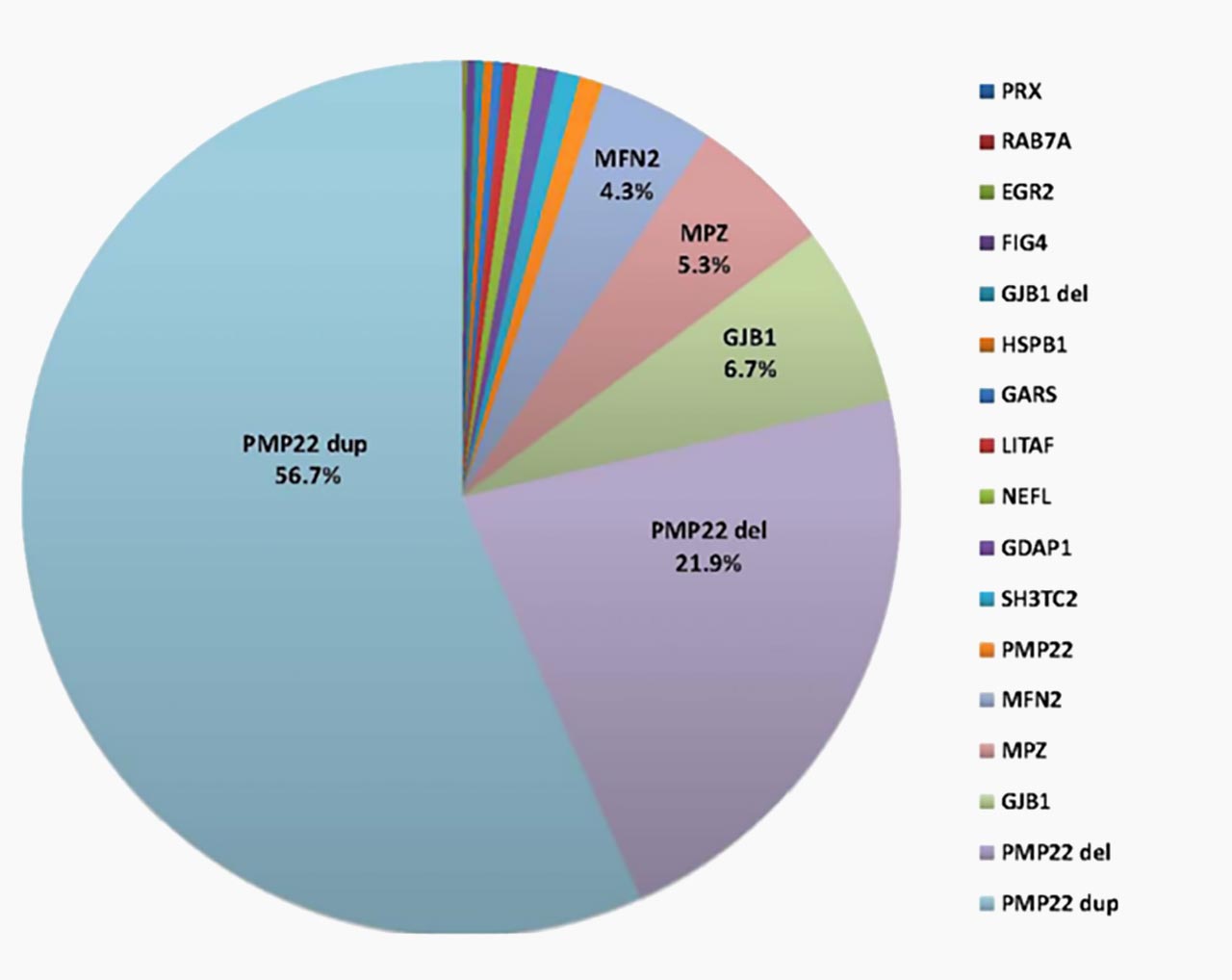Charcot-Marie-Tooth disease (CMT),
named after the three doctors who first identified it, is one of the most common inherited nerve disorders and is also referred to as hereditary sensory and motor neuropathy (HSMN). CMT affects an estimated 1 in 2,500 people in the United States and although considered a rare disease (under 200,000 people), experts believe the number to be much higher. There are an estimated 2.6 million people affected worldwide. CMT is considered to be one of the most common of the 7000 rare diseases affecting children.
There are over 100 different genes that cause CMT. Approximately 95% are diagnosed with the 4 most prevalent types of CMT: PMP22, MPZ, MFN2 and GJB1. The other mutations make up the remainder, as illustrated.

CMT usually doesn’t affect life expectancy,
however there are some types that are fatal and patients’ life span may be shortened due to respiratory muscle weakness, inactivity, depression and comorbidity. Symptoms and severity of disease may differ depending on CMT type and subtypes even within the same family of those affected.
Over time, CMT muscles in the feet, legs, and hands lose strength.
Often, the muscle loss happens unevenly, which causes foot and hand deformities, muscles wasting and atrophy leading to mobility issues. It can also have serious impacts on vision, hearing, breathing, speech and swallowing. Some patients experience hip dysplasia, scoliosis, and blindness.
Published in 2014: The mutation frequency of CMT disease genes in a large cohort (n = 17,377) analyzed at a commercial laboratory (1. Quest Diagnostics, Athena Diagnostics, Marlborough, Massachusetts 2. Departments of Molecular and Human Genetics and Pediatrics, Baylor College of Medicine, Houston, Texas). The pie chart shows the percentage of positive results attributed to each gene by color out of the total number of genetically positive patients (n = 3216) as determined by Sanger sequencing and MLPA. Mutations in four genes (PMP22 dup/del, GJB1, MPZ, and MFN2) accounted for 94.9% of the genetically positive patients in our cohort. PMP22 duplications (dup) accounted 56.7% of positive patients, PMP22 deletions (del) 21.9%, GJB1 6.7%, MPZ 5.3%, MFN2 4.3%, PMP22 0.9%, SH3TC2 0.8%, GDAP1 0.7%, NEFL 0.7%, LITAF 0.5%, GARS 0.4%, HSPB1 0.3%, GJB1 del 0.3%, FIG4 0.3%, EGR2 0.1%, RAB7A 0.1%, and PRX 0.03%.
CMT Symptoms Checklist
Use this checklist to keep track of your symptoms. Take it with you to each visit with your doctor.
Types of CMT
Description of the most most
common and prevalent types of CMT:
Patient Resources
Helpful resources for the
treatment & management of CMT.
